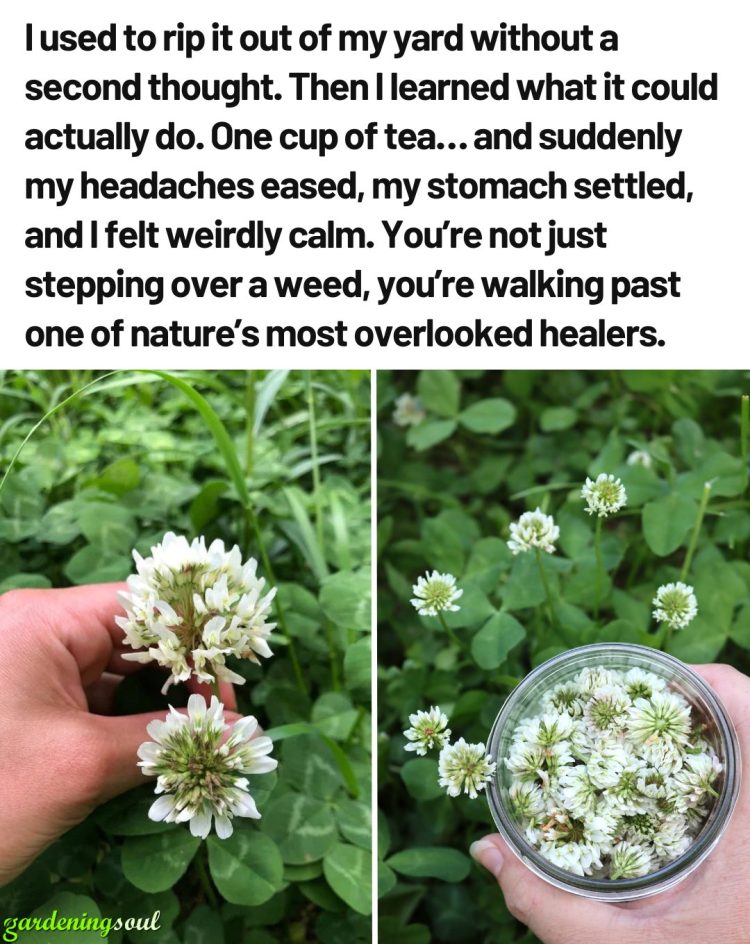A mild herbal infusion that supports detox, respiratory health, and immune function.
How to make it:
1 tablespoon of dried flowers (or 2 tbsp fresh)
1 cup of hot water
Steep for 10–15 minutes
Optional: Add lemon, honey, or mint
Drink up to 2 cups daily for wellness support.
2. White Clover Salve for Skin
Use white clover-infused oil as a healing salve for skin issues.
Ingredients:
1 cup dried white clover
1 cup carrier oil (olive, coconut, or almond)
Beeswax (for thickening)
Steps:
Infuse the clover in oil over low heat (double boiler) for 2–3 hours.
Strain and mix with melted beeswax.
Pour into tins and cool.
Apply to cuts, scrapes, bites, and dry skin.
3. Soothing Poultice
Crush fresh white clover leaves into a paste and apply directly to insect bites, minor wounds, or skin irritation.
4. White Clover Tincture
Used for more concentrated medicinal applications, especially for coughs and immune support.
How to make it:
Fill a glass jar with fresh clover flowers
Cover with 80-proof alcohol (vodka or brandy)
Let sit for 4–6 weeks in a dark place
Shake occasionally, strain, and store in dropper bottles
Use 10–20 drops diluted in water as needed.
5. Infused Honey
Add dried clover flowers to raw honey for a subtly sweet herbal infusion. Let sit for 1–2 weeks, then strain. Great for tea or sore throat relief.
How to Find and Forage White Clover
White clover is easy to identify and forage, but responsible harvesting is key.
Where It Grows:
Yards and lawns
Open fields and pastures
Along trails and roadsides
Edges of forests
Sunny, grassy areas with moderate moisture
When to Harvest:
Leaves: Spring through fall (best when young and tender)
Flowers: Late spring to early fall, when fully bloomed but not browned
Foraging Tips:
Harvest from areas free of pesticides, fertilizers, and pet traffic.
Pick only the top parts – leaves and flowers.
Avoid clover from roadsides due to pollution.
Never over-harvest from one patch.
Rinse thoroughly before use.
Precautions and Side Effects
While white clover is generally safe, there are a few precautions to consider:
1. Allergic Reactions
Some individuals may have a mild allergic reaction, especially if allergic to other legumes or flowering plants.
2. Blood Thinning Effects
White clover contains coumarins, which may thin the blood. Avoid use if you’re on blood-thinning medications (like warfarin) or have bleeding disorders.
3. Hormonal Activity
Contains plant estrogens (isoflavones). Avoid or limit use during pregnancy, breastfeeding, or if you have estrogen-sensitive conditions.
4. Mold Risks in Spoiled Clover
Never use fermented or spoiled white clover, as it may contain harmful compounds (like dicoumarol) that can interfere with blood clotting.
5. Always Consult Your Doctor
see continuation on next page
